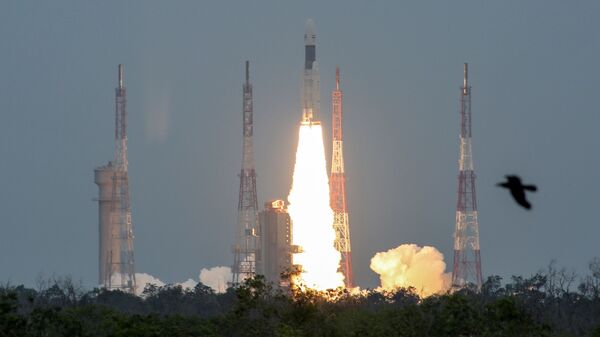Chandrayaan-2 crossed a milestone on Tuesday by successfully entering into lunar orbit. During the next 18 days, ISRO will undertake five earth-born orbit raising manoeuvres, before the lander Vikram attempts to soft-land in the South Polar region. Dr K. Sivan, Chairman of Indian Space Research Organisation (ISRO), described the coming landing as a “terrifying moment”. Dr Sivan addressed a media conference in the southern Indian city of Bengaluru on Tuesday, after the satellite successfully attained lunar orbit, and said many challenges await the ISRO scientists before the Chandrayaan-2 safely lands on the moon.
“The final descent of the lander will be 15 terrifying moments for us, as it is something we have never tried before. It is one of the most complex operations we have ever handled,” said Dr Sivan. “On the whole, such mission management itself is new to us.”
Chandrayaan-2, with its homegrown payloads, was launched on 22 July from ISRO’s spaceport on the eastern seacoast of Sriharikota in Andhra Pradesh.
Dr Sivan said the ISRO would be studying the mineral composition of the subsurface, and the emerging scientific data would help future lunar probes, including NASA’s Artemis programme, which envisages a moonwalk by the “first woman and the next man” to walk the lunar surface.
The lunar South Pole is especially interesting because the area remains in the shadows and is much larger than the lunar North Pole. The chances of finding water there is much higher, and the craters in cold traps could contain a fossil record of the early Solar System. India’s first Lunar Mission in 2008 identified traces of water on the moon.
The 3,850 kg spacecraft launched from a massive rocket, the GSLV Mark III, which had a 100 per cent success rate, having completed two launches and one sub-orbital flight. It is India’s most powerful launcher to date and is entirely designed and fabricated in the country.




